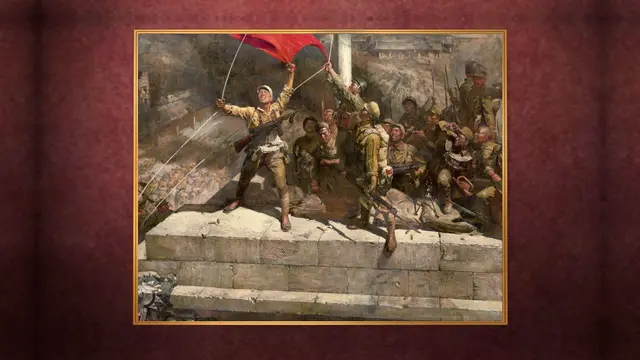02:00

The oil painting entitled, “Occupying Presidential Palace” was created by Chinese artists Chen Yifei and Wei Jingshan in 1977.
It depicts the moment when the Chinese People’s Liberation Army (PLA) captured the KMT “presidential palace” on April 23, 1949.
Chinese People's War of Liberation, fought between the KMT and the CPC forces, started in 1946.
KMT forces suffered consecutive defeats against the PLA troops in major battlefields during 1948 and 1949.
The CPC forces controlled the area north of the Yangtze River by the spring of 1949.
The KMT government stationed their best and largest forces along the defense line south of the river.
Representatives from both sides attempted to negotiate a ceasefire, but the KMT government refused to sign the peace agreement.
As the negotiation broke down, Chairman Mao Zedong and Commander-in-Chief Zhu De ordered the PLA troops to cross the river.
On April 20, 1949, the PLA launched the Yangtze River Crossing campaign and destroyed the KMT military's defense line.
The offensive threatened the KMT government in Nanjing and KMT officials fled Nanjing and retreated to nearby cities.
The PLA then captured Nanjing without encountering much resistance.
Soldiers climbed to the roof of the KMT “presidential palace” and replaced the KMT flag with the PLA’s red flag.
The liberation of Nanjing in east China’s Jiangsu Province marked the end of the KMT's 22-year governance in China.
Check out
The China Report
, our new weekly newsletter.Subscribe here!
 简体中文
简体中文

